The Edward F. Swinney Foundation, Bank of America, N.A., Trustee Gallery
Introduction
Text-to-speech Audio
World War II led to an economic boom in Kansas City, much like the rest of the United States, pulling the city out of the economic depths posed by the Great Depression. After the War, efforts were made to rebuild the city, fully separating Kansas City from the Pendergast Machine of the 1930s. Reforms led to improvements that boosted the economy and promoted a "Kansas City Spirit." Community entertainment increased through the introduction of professional sports teams, the development of World's of Fun and Crown Center, and an increase in cultural centers. Such growing entertainment proved to become Kansas City's new booming industry, replacing the city's past leading industry: the stockyards. Other industries, such as transportation, greeting cards, and marionette manufacture, thrived as well. However, in the midst of political and economic reform, racial inequality persisted in Kansas City. Civil Rights activists worked diligently to promote the end of racial discrimination, leading boycotts, walkouts, and when tensions rose, protests. Additional activism rose to end discrimination against the LGBTQ+ community. All-in-all, the latter half of the 20th century marked great changes for Kansas City, and set a foundation as it approached the 21st century.
Images
Norman Rockwell's "The Kansas City Spirit"
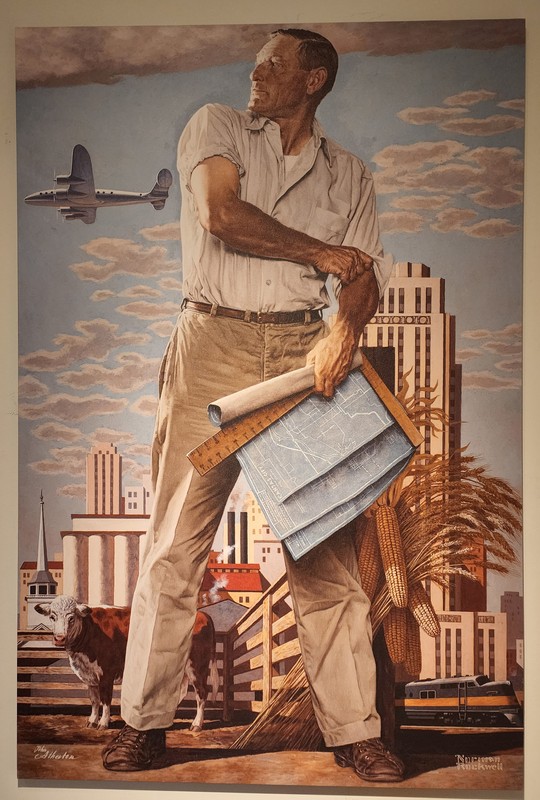
The Kansas City Spirit Label
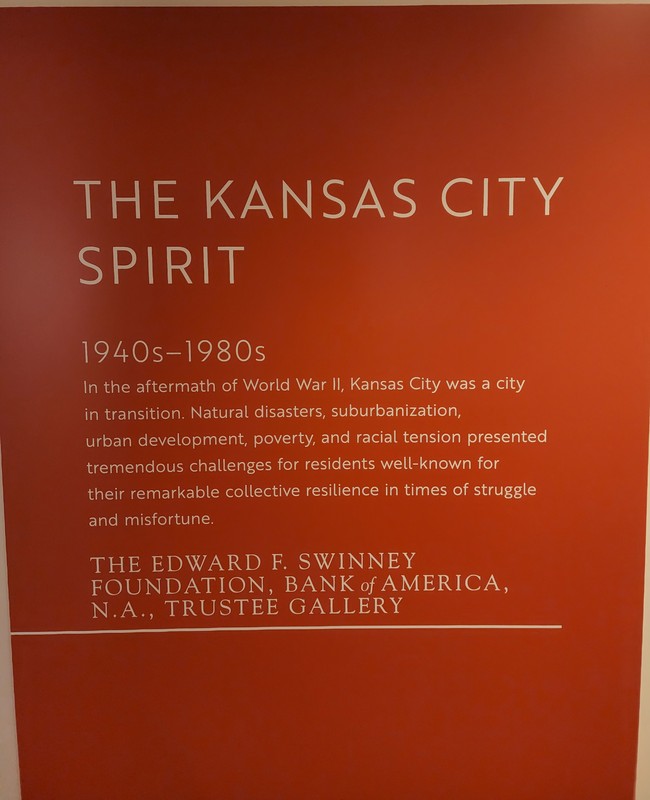
Rebuilding the City Label
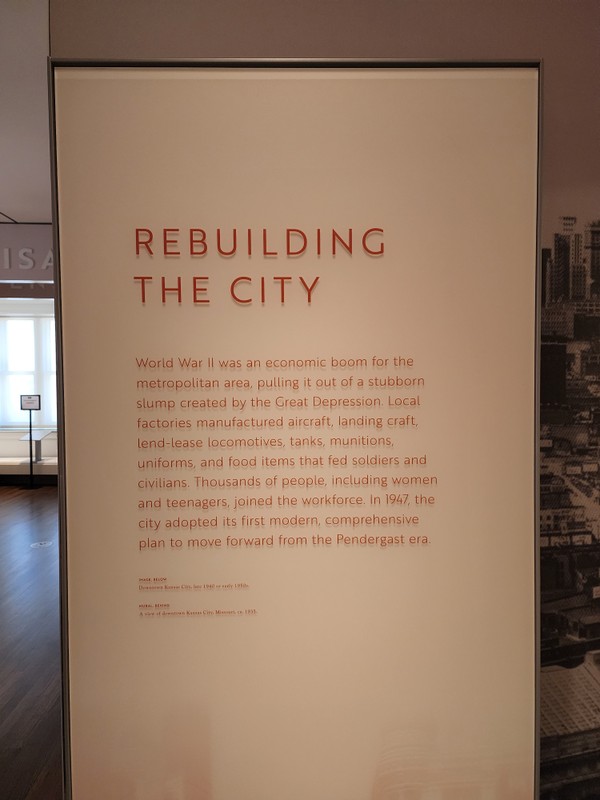
Kansas City Royals Display
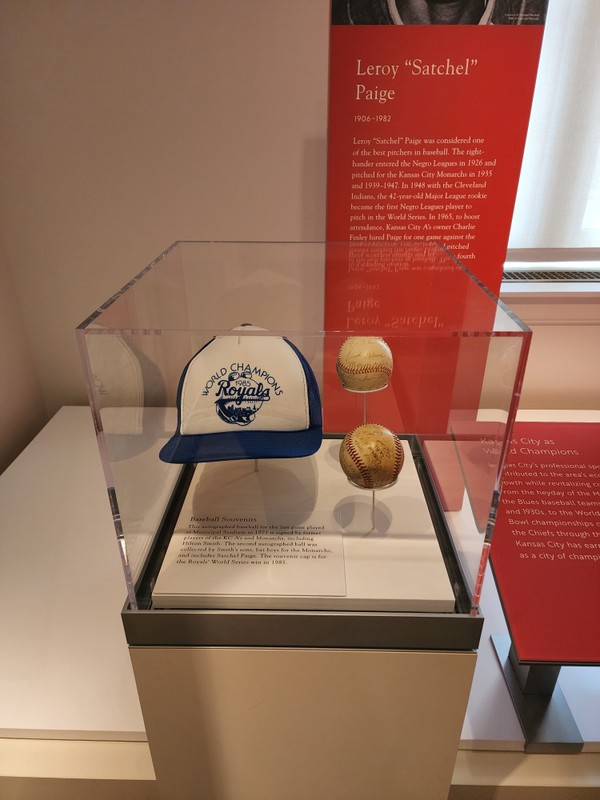
Leroy "Satchel" Paige Label
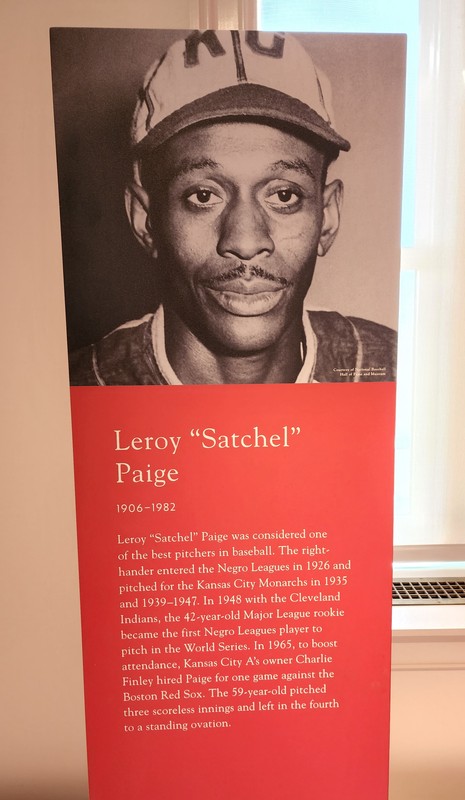
Ewing Marion Kauffman Label
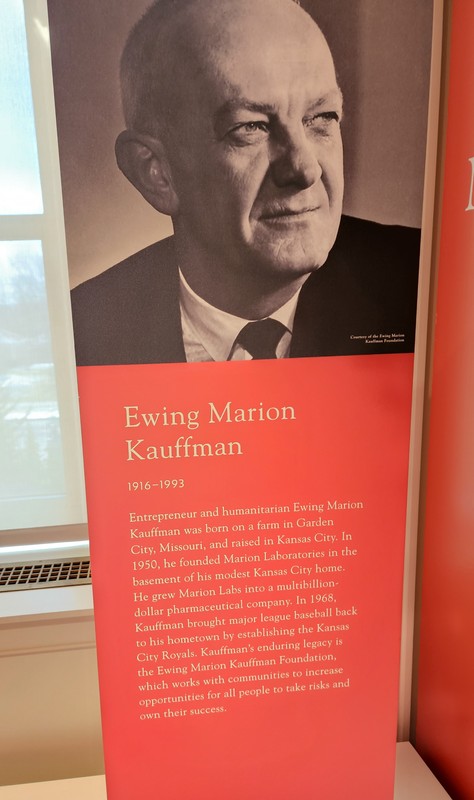
Transforming the City Label
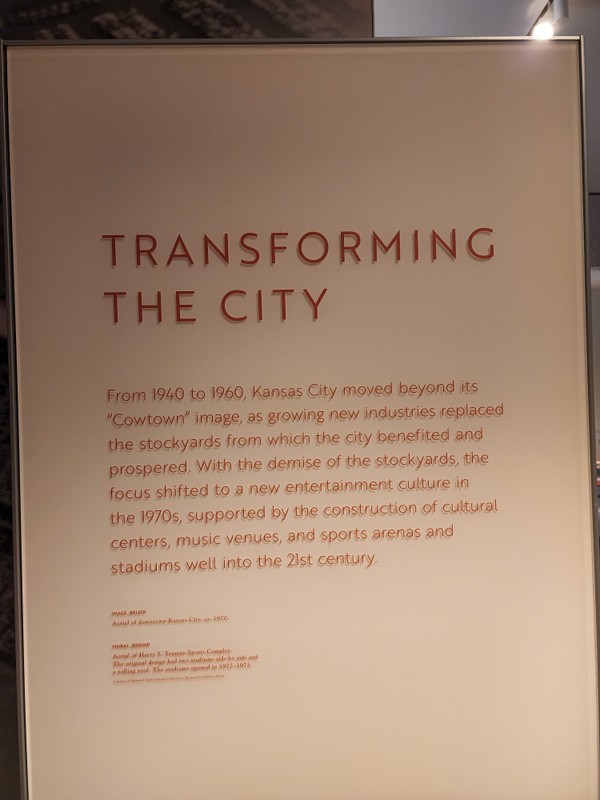
The Wasp Nest Display
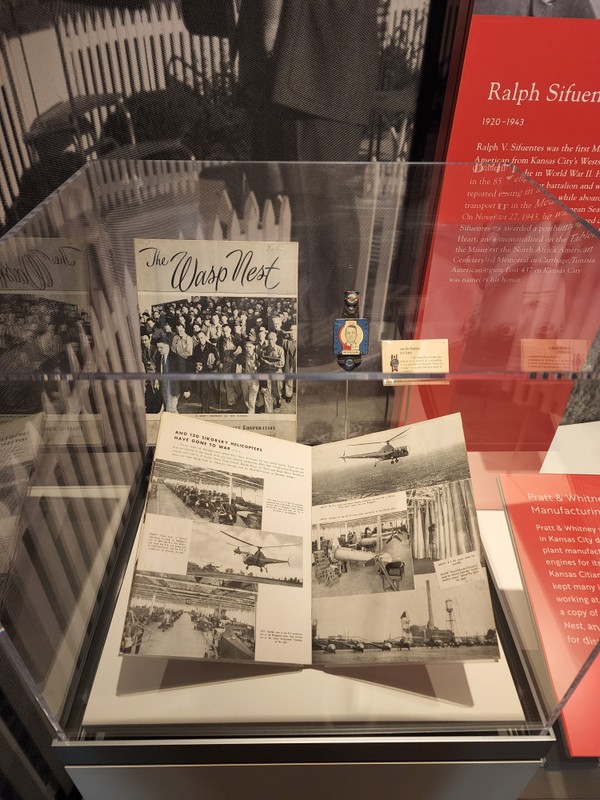
Segregation and Racial Tensions Label
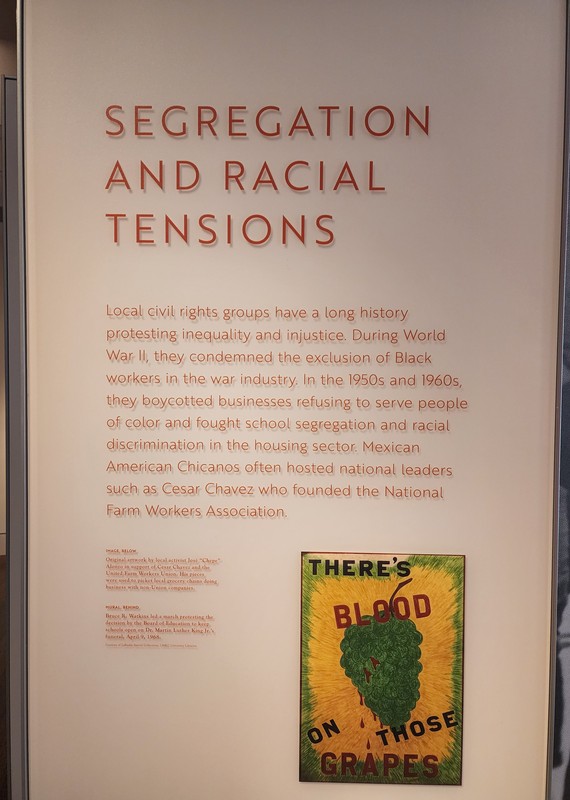
Lucile H. Bluford Label
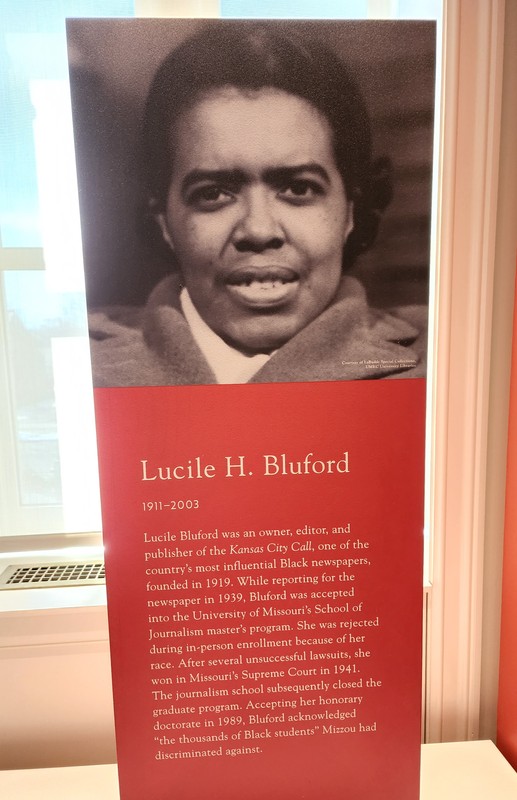
Quote from Bruce R. Watkins
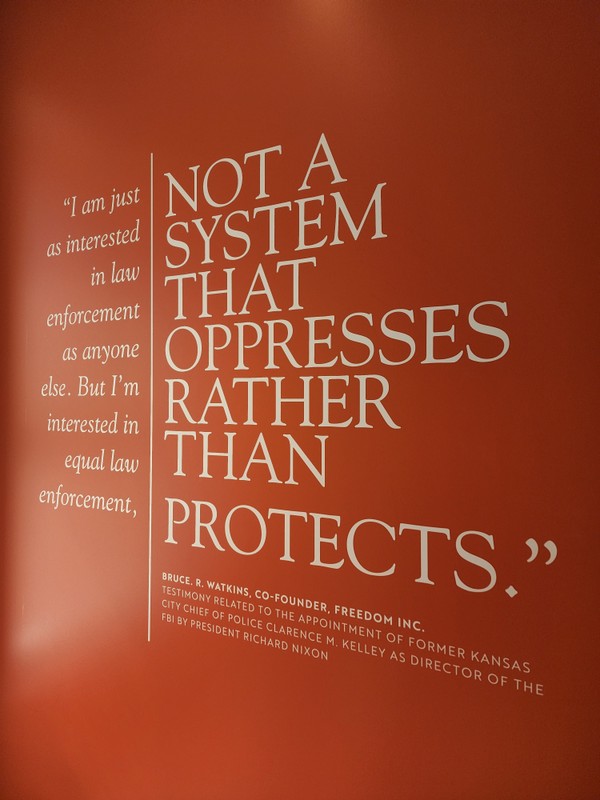
Quote from Esther Swirk Brown
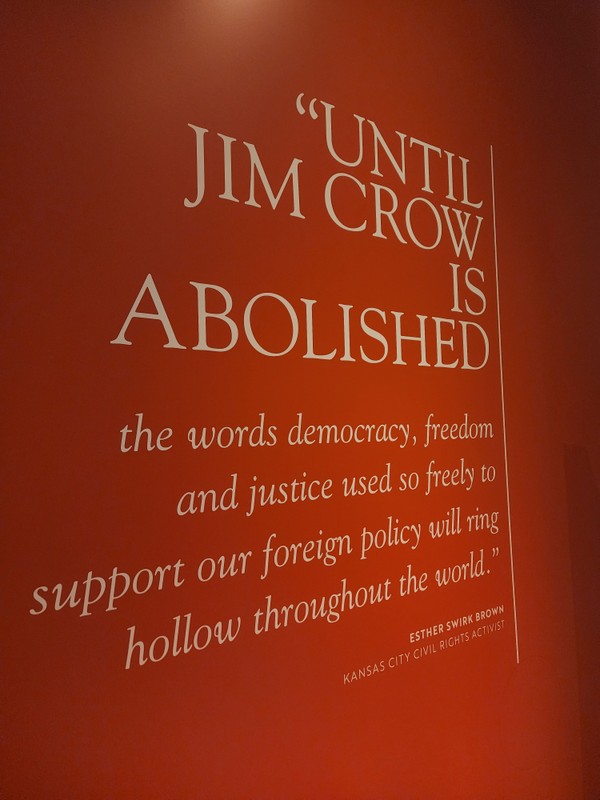
TWA Display
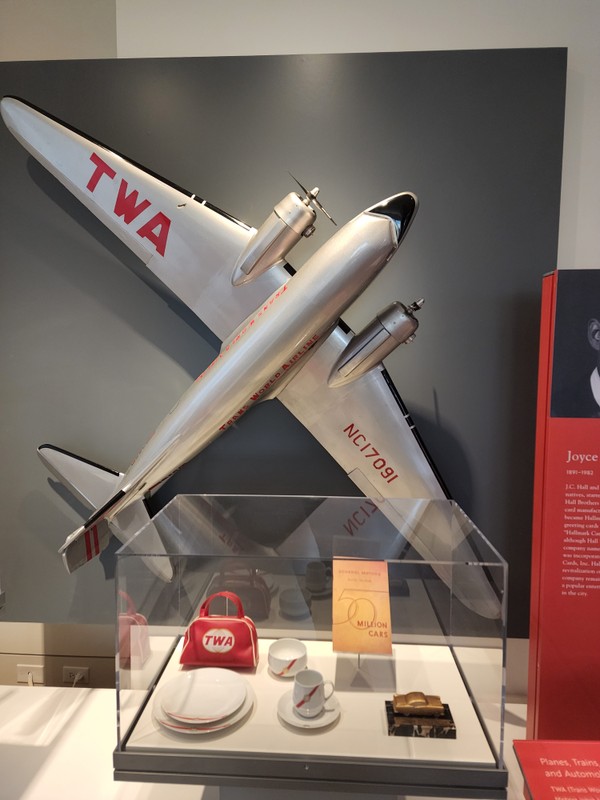
Puppets made by Hazelle Rollins
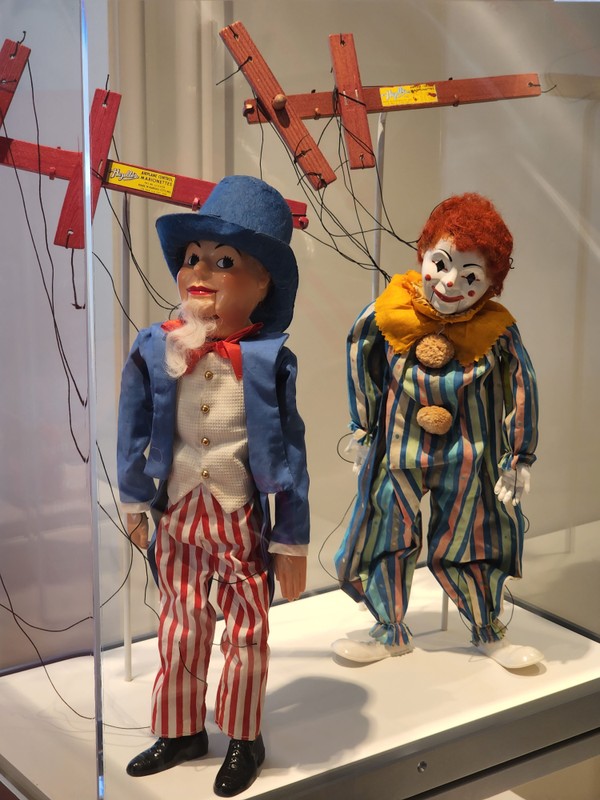
Drew Shafer Label
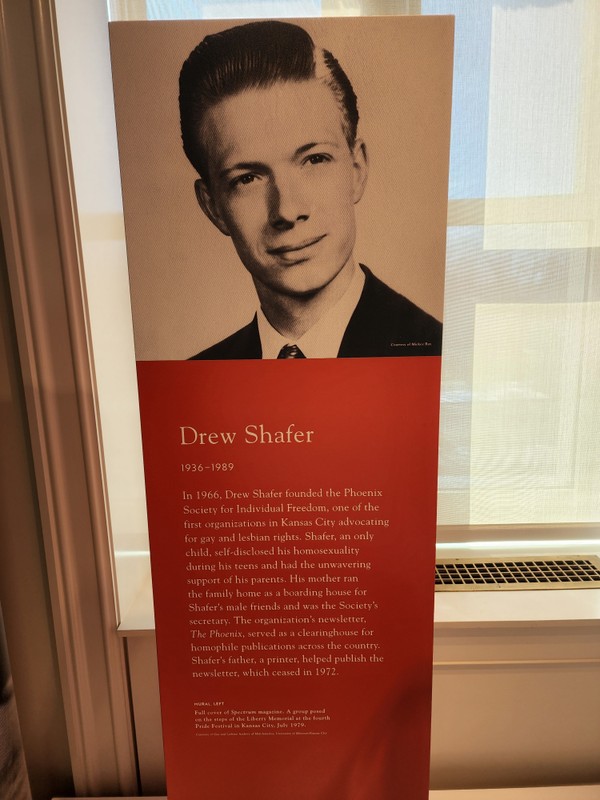
Human Rights and Pride Festival Display
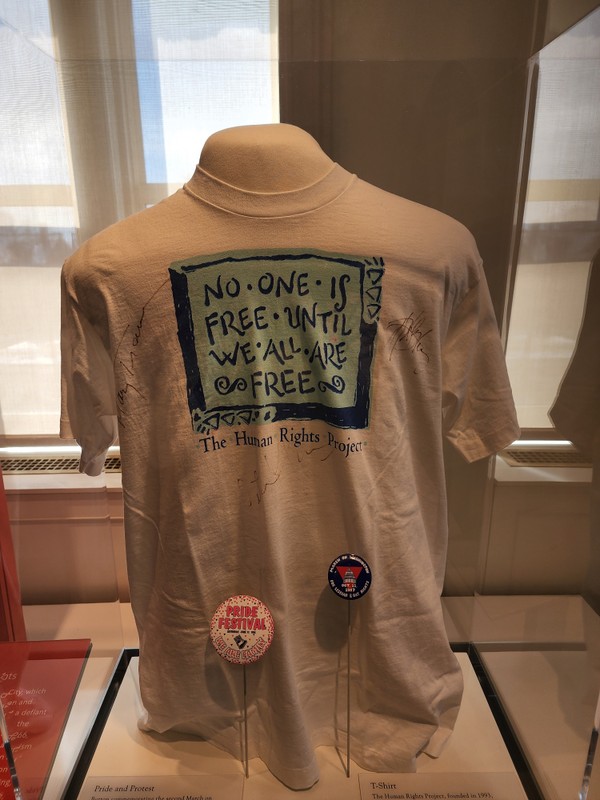
Backstory and Context
Text-to-speech Audio
The period from the 1940s through the 1980s were a time of immense change for Kansas City. As the city aimed to move away from its past "Boss Politics," other issues and tensions came to light. First and foremost, however, the city's economy had suffered greatly from the Great Depression and Pendergast's corrupt political machine. As the city neared bankruptcy, the new mayor, John B. Gage, aimed to achieve economic stability in the city. However, before too many changes could be made, the United States joined World War II in 1941, leading to new industries and jobs for the American people to contribute to the war effort. The War propelled the American economy out of the Great Depression, leading to economic stability in spite of the tragedies that were occurring throughout the world.
During World War II, Pratt & Whitney Manufacturing served as a major employer in Kansas City. The company specialized in manufacturing Double Wasp aircraft engines for the U.S. Navy. Many artifacts from the manufacturing plant are on display at the Kansas City Museum courtesy of Hugh Roll, a Kansas City native who worked for Pratt & Whitney. Union Station also saw its largest number of travelers during the war, as it became the hub for railroad passengers. While World War II propelled Kansas City out of the Depression, the city experienced its fair share of tragedies during the war. Many people participated in the war effort by joining the military, especially young men. Unfortunately, World War II had innumerable casualties. One such casualty was Ralph Sifuentes, the first Mexican American from Kansas City's Westside to perish during the war. He went missing in action while in the Mediterranean Sea and declared dead on November 27, 1943. Posthumously awarded a Purple Heart for his sacrifice, Sifuentes' death was memorialized in Kansas City with the American Legion Post 437 named in his honor.
After the end of World War II, the passage of the American Housing Act of 1949 led to new housing construction built through private-public initiatives. Housing construction was insured by the Federal Housing Administration. However, such initiatives benefitted mostly white homeowners, displacing low-income families, re-segregating cities, and damaging dreams of homeownership for people of color. The introduction of this Act further exacerbated racial tensions throughout the country, including Kansas City.
Kansas City has a long history of racial segregation and discrimination, and local civil rights activists have protested inequality and injustice throughout the decades. After the assassination of Dr. Martin Luther King, Jr., officials in Kansas City rejected requests for schools to close for his funeral. In response, there were school walkouts and protests that turned into rioting. Police used tear gas against students at Holy Name Church, and this, along with years of oppression, sparked violent unrest that ended in injuries and death. Other forms of activism occurred in Kansas City in the fight for racial equality and justice. Founded in 1962 by Leon M. Jordan and Bruce R. Watkins, Freedom, Inc. was an organization that empowered the Black community in Kansas City. Voter registration drives were one way the organization pushed for African American involvement in elections.
Individuals also contributed to civil rights in the area, including Lucile H. Bluford and Fred Curls. Bluford was an owner, editor, and publisher of the main Black newspaper, "The Kansas City Call." She was rejected from the University of Missouri's Journalism Master's program, after initially being accepted, due to racial discrimination. She took the issue to the Missouri Supreme Court and won against the University of Missouri in 1941, but the school closed its Journalism Master's program shortly after. Fred Curls was a realtor who actively fought housing discrimination in the city. He worked to expand homeownership among African Americans and also served as part of the founding board for Freedom, Inc. Considering Kansas City had a long history of housing discrimination and redlining to bar African Americans from newer suburbs, Curls' work was extremely important for civil rights in the area.
Civil Rights activism expanded in Kansas City throughout the 1960s and 1970s, including activism for Latinx communities and the LGBTQ+ community. The Phoenix Society, founded in 1966 by Drew Shafer, was one of the first organizations in Kansas City advocating for the LGBTQ+ community, beginning with gay and lesbian rights. Shafer's parents assisted with the Society, opening their home as a boardinghouse and helping with the Society's newsletter, "The Phoenix." The Phoenix Society served as an example for later activist groups that formed in Kansas City, all present in political activism to fight discriminations in housing, marriage, and employment.
As civil rights activism rose in Kansas City, so too did additional industries. The puppet industry rose in Kansas City thanks to Hazelle Rollins, creator of the puppets photographed below. Her control mechanism was patented, and she maintained affordable prices even as she gained international customers. Professional sports also became a lucrative industry in Kansas City, with the growth of the Kansas City Royals Major League Baseball team and the Kansas City Chiefs football team. Entrepreneur and humanitarian Ewing Marion Kauffman established The Royals in Kansas City in 1968, bringing a major league team to the city. The Truman Sports Complex, spearheaded by Mayor Charles Wheeler, served as the home for both the Royals and the Chiefs with two separate stadiums. Wheeler also oversaw the development of Crown Center, the Worlds of Fun amusement park, and the Crown Center Hotel. The building boom of the 1970s, of which these construction projects were a part, continued to push Kansas City towards a more stable economy free of its past corruption.
Overall, the Kansas City Spirit is one of hard work, perseverance, and dedication. While the foundation of racial inequality can still be seen within the city today, the people of Kansas City continue to work towards progress and improvement as time goes on.
Sources
Kansas City Museum, 3218 Gladstone Blvd., Kansas City, MO, 64123 (accessed March 8, 2022). Wall Plaques: Wall text. The Edward F. Swinney Foundation, Bank of America, N.A., Trustee Gallery, Kansas City Museum, Kansas City, Missouri.
